A Unique Gene Regulatory Network Resets the Human Germline Epigenome for Development
Walfred W.C. Tang, Sabine Dietmann, Naoko Irie, Harry G. Leitch, Vasileios I. Floros, Charles R. Bradshaw 1, Jamie A. Hackett, Patrick F.Chinnery, M. Azim Surani, 04.06.2015
Abstract
Resetting of the epigenome in human primordial germ cells (hPGCs) is critical for development. We show that the transcriptional program of hPGCs is distinct from that in mice, with co-expression of somatic specifiers and naive pluripotency genes TFCP2L1 and KLF4. This unique gene regulatory network, established by SOX17 and BLIMP1, drives comprehensive germline DNA demethylation by repressing DNA methylation pathways and activating TET-mediated hydroxymethylation. Base-resolution methylome analysis reveals progressive DNA demethylation to basal levels in week 5–7 in vivo hPGCs. Concurrently, hPGCs undergo chromatin reorganization, X reactivation, and imprint erasure. Despite global hypomethylation, evolutionarily young and potentially hazardous retroelements, like SVA, remain methylated. Remarkably, some loci associated with metabolic and neurological disorders are also resistant to DNA demethylation, revealing potential for transgenerational epigenetic inheritance that may have phenotypic consequences. We provide comprehensive insight on early human germline transcriptional network and epigenetic reprogramming that subsequently impacts human development and disease.
TANG, Walfred WC, et al. A unique gene regulatory network resets the human germline epigenome for development. Cell, 2015, 161. Jg., Nr. 6, S. 1453-1467.
Publication: https://doi.org/10.1016/j.cell.2015.04.053
 Disclaimer
Disclaimer
The publication A Unique Gene Regulatory Network Resets the Human Germline Epigenome for Development by Walfred W.C. Tang, Sabine Dietmann, Naoko Irie, Harry G. Leitch, Vasileios I. Floros, Charles R. Bradshaw 1, Jamie A. Hackett, Patrick F.Chinnery, M. Azim Surani is published under an open access license: https://creativecommons.org/licenses/by/4.0/. Permits to share, copy and redistribute the material in any medium or format and to adapt, remix, transform, and build upon the material for any purpose, even commercially.
Curation by the MFGA team Relevant data sets presented in the publication have been identified. If possible, annotations (title, general information, conditions, processed tissue types and processed cell types) have been added based on information from the publication. Data tables and images that provide a good overview on the publication's findings on the data set have been extracted from the publication and/or supplement. If not stated otherwise, images are depicted with title and description exactly as in the publication. Tables have been adjusted to the MFGA table format. Conducted adjustments are explained in the detailed view of the tables. However, titles and descriptions have been adopted from the publication.
Data set 1: RNA-Seq Reveals Unique Transcriptional States of hPGCs
Transcriptome: Bulk RNA-Sequencing
Species
| Species |
|---|
| Human |
Tissue Types
| BRENDA tissue ontology | Maturity | Description | Species | Replicates |
|---|---|---|---|---|
| Embryonic | Human | 14 |
Cell Types
| Cell ontology | Maturity | Description | Species | Replicates | Cells per replicate |
|---|---|---|---|---|---|
| CL_0000670: primordial germ cell | Primordial | Human primordial germ cells (hPGCs) | Human | 14 | |
| CL_0002371: somatic cell | Embryonic | Gonadal somatic cells | Human | 14 |
Images
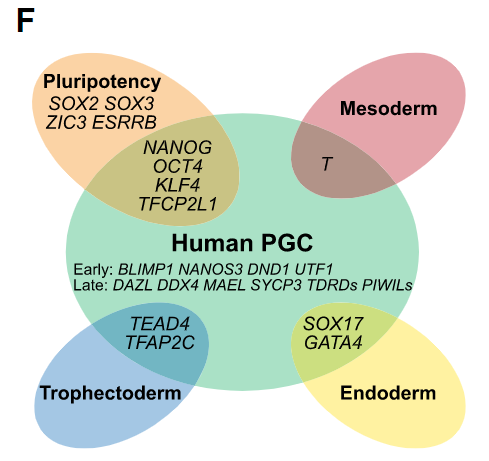
Figure 2 F: Schematic illustrating the unique transcriptome of hPGCs.
Licensed under: https://creativecommons.org/licenses/by/4.0/
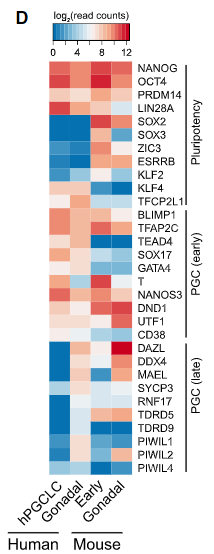
Figure 2 D: Expression of key genes in human and mouse PGCs.
Mean expression in biological replicates of hPGCLCs, Wk7–Wk9 hPGCs (gonadal), E7.5 (early), and E11.5–12.5 (gonadal) mPGCs are shown.
Licensed under: https://creativecommons.org/licenses/by/4.0/
Data set 2: Comprehensive DNA Demethylation in hPGCs Revealed by Base-Resolution BS-Seq
Methylome: Whole Genome Bisulfite Sequencing
Species
| Species |
|---|
| Human |
Tissue Types
| BRENDA tissue ontology | Maturity | Description | Species | Replicates |
|---|---|---|---|---|
| Embryonic | Human | 14 |
Cell Types
| Cell ontology | Maturity | Description | Species | Replicates | Cells per replicate |
|---|---|---|---|---|---|
| CL_0000670: primordial germ cell | Primordial | Human primordial germ cells (hPGCs) | Human | 14 | |
| CL_0002371: somatic cell | Embryonic | Gonadal somatic cells | Human | 14 |
Images
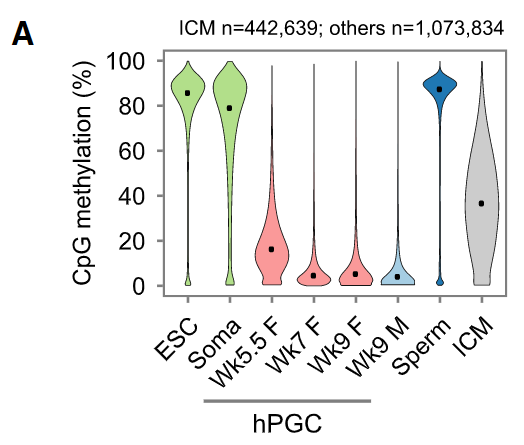
Figure 4 A: Comprehensive DNA Demethylation in hPGCs Revealed by Base-Resolution BS-Seq
Violin plots showing distribution of CpG methylation levels in overlapped 1 kb genomic tiles of conventional H9 ESCs, Wk7 female gonadal somatic cells (soma), Wk5.5–Wk9 female and male hPGCs, sperm, and ICM. Common tiles with a minimum of 5 CpGs and at least 20% of the total CpGs covered by at least 53in each sample are considered. These thresholds were appliedto all subsequent methylation analyses unless stated otherwise. Due to low coverage, ICM only has about 42% of common tiles fulfilling the above criteria. Black point indicates median.
Licensed under: https://creativecommons.org/licenses/by/4.0/
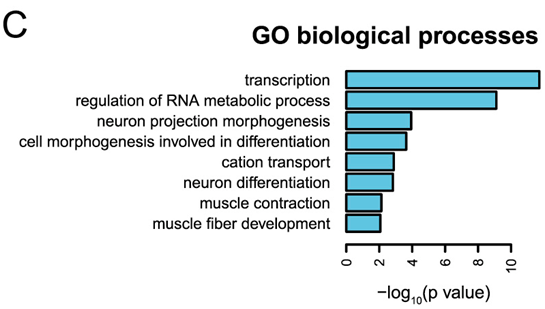
Figure S7 C: DAVID enrichment analysis of GO biological processes and KEGG pathways of 2,092 protein-coding genes with repeat-poor escapees in their gene bodies
Top-enriched terms are shown for each category, redundant GO terms were removed.
Licensed under: https://creativecommons.org/licenses/by/4.0/
Data set 3: Schematic showing dynamics of preimplantation and germline epigenetic reprogramming in humans.
Methylome: Whole Genome Bisulfite Sequencing
Species
| Species |
|---|
| Human |
Cell Types
| Cell ontology | Maturity | Description | Species | Replicates | Cells per replicate |
|---|---|---|---|---|---|
| CL_0000670: primordial germ cell | Primordial | Human primordial germ cells (hPGCs) | Human | 14 |
Images
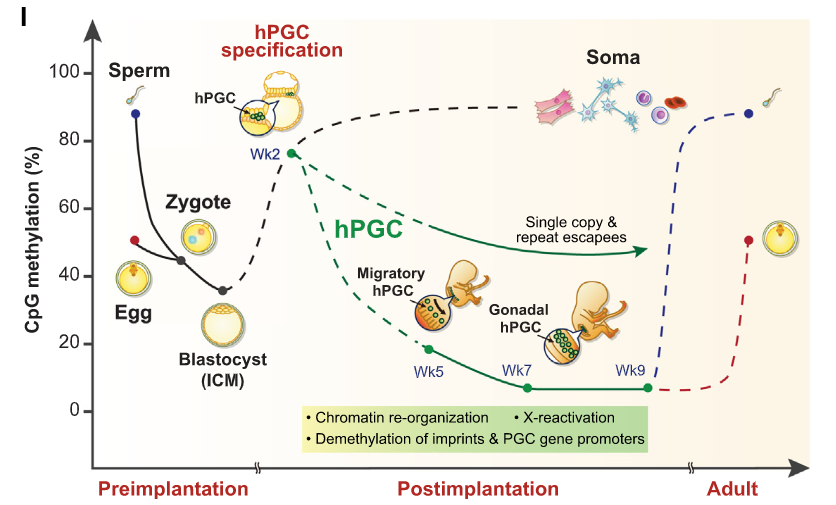
Figure 7I
hPGCs undergo the most comprehensive wave of globalDNA demethylation, which reaches a minimum of 5% CpG methylation at weeks 7–9. Some single copy and repeat loci remain methylated and are candidates for transgenerational epigenetic inheritance. Dotted line indicates postulated methylation dynamics. See also Figure S7.
Licensed under: https://creativecommons.org/licenses/by/4.0/
